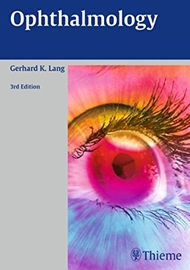If you are an ophthalmologist who enjoys books with coloured pictures, you’re no lone wolf. The third edition of Lang’s Ophthalmology will definitely pique your primal ophthalmologist instincts. You will be drawn to its soft-bound yet sturdy looking exterior. Flicking through the pages will show you plenty of colours both in pictures and in tables.
Once you start reading it, the book serves to feed the other stereotype associated with those in the eye trade: pattern recognition. The aforementioned figures and tables are a good aide-memoire to common ophthalmic conditions, their investigations and their treatment. Chapter 20 is a good example; it covers the ocular pharmacology quite succinctly and also gives common figures and measurements often expected, sadly, to be rote-learned by trainees.
Where the book struggles is in the depth of knowledge presented, as well as the age of the treatment options discussed. As an example, it only fleetingly mentions anti-VEGF treatment which has revolutionised the treatment of neovascular age-related macular degeneration (AMD) over the past decade or so. It does not shy away from giving more facetime to laser treatment for AMD, an option hardly any medical retinal specialist will confidently offer their patients these days. Another example is the surgical management of glaucoma. The book does not mention the now common surgical options of drainage tubes and valves or shunt devices.
In summary, this book, which is a translation of the fifth edition of the German book Augenheilkunde (2014) by the same author, falls short of its proclaimed aim to serve ophthalmologists in training and those in practice looking to revise. In my opinion it will better serve optometry students, medical students and nurse practitioners (please do see chapter 19), once of course it has updated itself to catch up with the currently accepted practices in ophthalmology.




